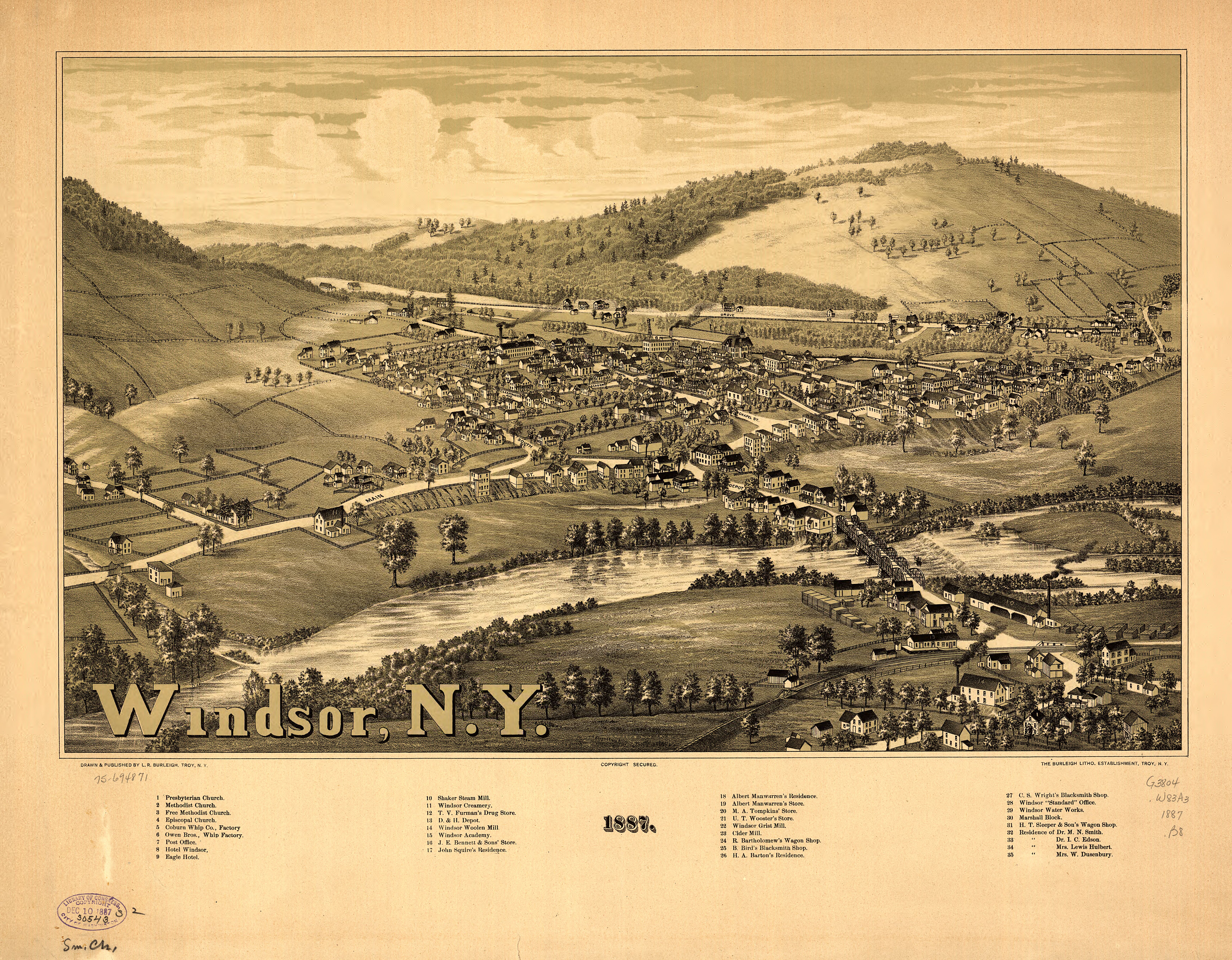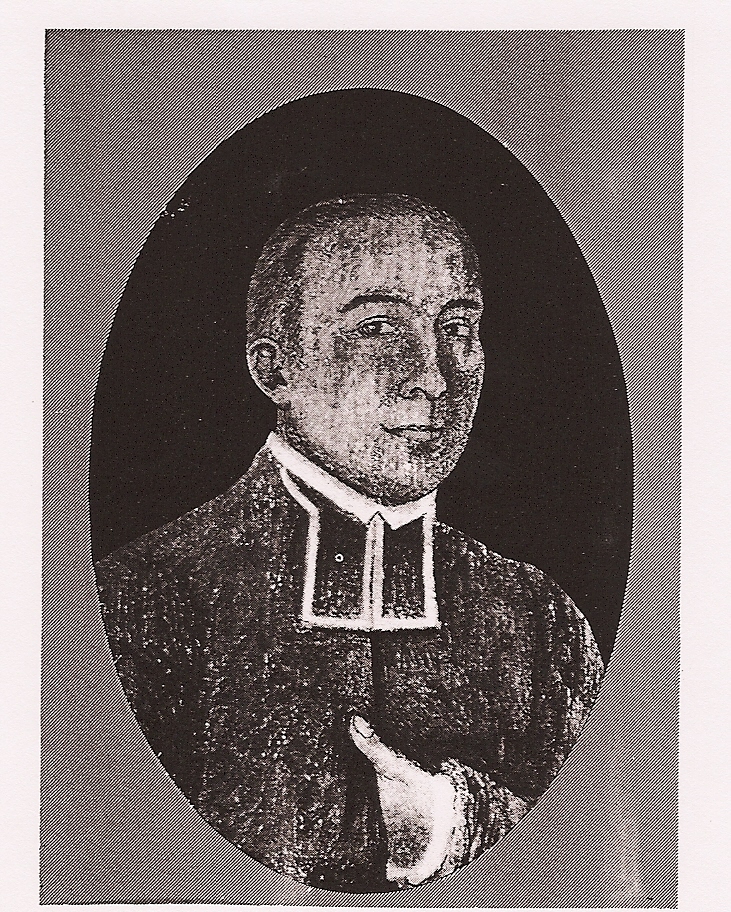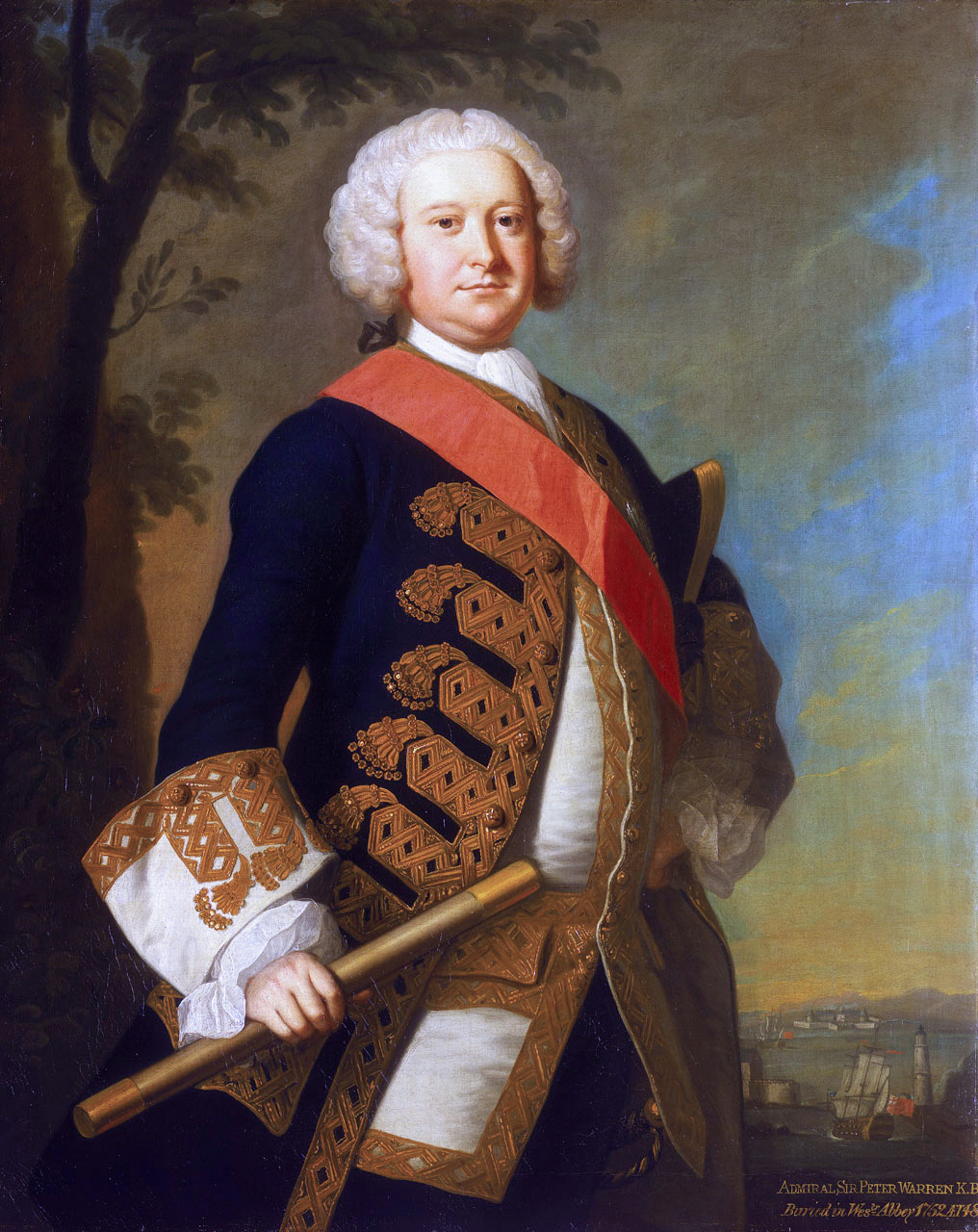|
Onaquaga
Onaquaga (also spelled many other ways) was a large Iroquois village, located on both sides of the Susquehanna River near present-day Windsor, New York. During the American Revolutionary War, the Continental Army destroyed it and nearby Unadilla in October 1778 in retaliation for British and Iroquois attacks on frontier communities. Population Onaquaga was originally home to members of the Oneida tribe, one of the Five Nations of the Iroquois Confederacy. The Iroquoian-speaking Tuscarora people joined in outlying settlements when they migrated north from South Carolina and became the Sixth Nation of the confederacy in 1722. In 1753, Nanticoke refugees from Virginia also moved into the village. That same year, Reverend Gideon Hawley established an Indian mission in the village. The establishment of the mission led to an increase in population of Christianized Indians living in and about the village, both those from the area and those who migrated from elsewhere (reference: Olde ... [...More Info...] [...Related Items...] OR: [Wikipedia] [Google] [Baidu] |
Raid On Unadilla And Onaquaga
The Raid on Unadilla and Onaquaga was a series of military operations by Continental Army forces and New York militia against the Iroquois towns of Unadilla and Onaquaga in what is now upstate New York. In early October 1778, more than 250 men under the command of Lieutenant Colonel William Butler of the 4th Pennsylvania Regiment descended on the two towns (which had been abandoned because of their advance) and destroyed them, razing most of the buildings and taking or destroying provisions, including the people's winter stores. They conducted the raid in retaliation for a series of raids on frontier communities led by Mohawk chief Joseph Brant and British-supported Loyalists during the spring and summer of 1778. Unadilla was located in what is now the Village of Unadilla, Town of Unadilla, Otsego County, and Onaquaga was located in what is now the Town of Windsor, Broome County. Background With the failure of British General John Burgoyne's campaign to the Hudson after ... [...More Info...] [...Related Items...] OR: [Wikipedia] [Google] [Baidu] |
Joseph Brant
Thayendanegea or Joseph Brant (March 1743 – November 24, 1807) was a Mohawk people, Mohawk military and political leader, based in present-day New York (state), New York, who was closely associated with Kingdom of Great Britain, Great Britain during and after the American Revolution. Perhaps the Native Americans in the United States, Native American of his generation best known to the Americans and British, he met many of the most significant Anglo-American people of the age, including both George Washington and George III of the United Kingdom, King George III. While not born into a hereditary leadership role within the Iroquois, Iroquois League, Brant rose to prominence due to his education, abilities, and connections to British officials. His sister, Molly Brant, was the wife of Sir William Johnson, 1st Baronet, Sir William Johnson, the influential British Superintendent of Indian Affairs in the province of New York. During the American Revolutionary War, Brant led Mo ... [...More Info...] [...Related Items...] OR: [Wikipedia] [Google] [Baidu] |
Windsor (town), New York
Windsor is a town in Broome County, New York, United States. The population was 5,804 at the 2020 census. The town is on the southern border of the county and is east of Binghamton. The town includes the village of Windsor, located on the Susquehanna River. History This area along the Susquehanna had long been settled by varying cultures of indigenous peoples, including those of the historic Iroquois Confederacy, who used the river for transportation, water and fishing. Around 1712 remnants of the Tuscarora tribe settled in the northern part of the town. Also an Iroquoian-speaking people, they had migrated from North Carolina, which they left because of warfare with English colonists and other tribes. In 1722, the Tuscarora were accepted by the Iroquois as the Sixth Nation of their political confederacy. Their fortified village, '' Onaquaga'', was an outpost of the British Colonies. A mission had been established there by the Indian Superintendent, Sir William Johnson. Moh ... [...More Info...] [...Related Items...] OR: [Wikipedia] [Google] [Baidu] |
Unadilla (village), New York
Unadilla is a village located in the Town of Unadilla in Otsego County, New York, United States. The population was 1,128 at the 2010 census. The Village of Unadilla is located in the southern part of the town, southwest of Oneonta. The community refers to itself as "The Village Beautiful." History The town was originally the site of a Seneca Indian village at the confluence of the Susquehanna and Unadilla Rivers, where the village of Sidney (in Delaware County) is now located. The name Unadilla, which represents one spelling from a number of different interpretations of several Iroquois dialects, is said to mean "Meeting Place", indicating the place where two rivers meet. Unadilla was first settled by whites around 1770. The location of the village now called Unadilla was first settled about the same time by a group of Scots-Irish at the junction of the Ouleout Creek and the Susquehanna River. Both villages were destroyed by the Continental Army in October 1778 because th ... [...More Info...] [...Related Items...] OR: [Wikipedia] [Google] [Baidu] |
Iroquois
The Iroquois ( or ), officially the Haudenosaunee ( meaning "people of the longhouse"), are an Iroquoian-speaking confederacy of First Nations peoples in northeast North America/ Turtle Island. They were known during the colonial years to the French as the Iroquois League, and later as the Iroquois Confederacy. The English called them the Five Nations, comprising the Mohawk, Oneida, Onondaga, Cayuga, and Seneca (listed geographically from east to west). After 1722, the Iroquoian-speaking Tuscarora people from the southeast were accepted into the confederacy, which became known as the Six Nations. The Confederacy came about as a result of the Great Law of Peace, said to have been composed by Deganawidah the Great Peacemaker, Hiawatha, and Jigonsaseh the Mother of Nations. For nearly 200 years, the Six Nations/Haudenosaunee Confederacy were a powerful factor in North American colonial policy, with some scholars arguing for the concept of the Middle Ground, in that Europe ... [...More Info...] [...Related Items...] OR: [Wikipedia] [Google] [Baidu] |
George Washington
George Washington (February 22, 1732, 1799) was an American military officer, statesman, and Founding Father who served as the first president of the United States from 1789 to 1797. Appointed by the Continental Congress as commander of the Continental Army, Washington led the Patriot forces to victory in the American Revolutionary War and served as the president of the Constitutional Convention of 1787, which created the Constitution of the United States and the American federal government. Washington has been called the " Father of his Country" for his manifold leadership in the formative days of the country. Washington's first public office was serving as the official surveyor of Culpeper County, Virginia, from 1749 to 1750. Subsequently, he received his first military training (as well as a command with the Virginia Regiment) during the French and Indian War. He was later elected to the Virginia House of Burgesses and was named a delegate to the Continental Congress ... [...More Info...] [...Related Items...] OR: [Wikipedia] [Google] [Baidu] |
The Old New York Frontier - 1
''The'' () is a grammatical article in English, denoting persons or things already mentioned, under discussion, implied or otherwise presumed familiar to listeners, readers, or speakers. It is the definite article in English. ''The'' is the most frequently used word in the English language; studies and analyses of texts have found it to account for seven percent of all printed English-language words. It is derived from gendered articles in Old English which combined in Middle English and now has a single form used with pronouns of any gender. The word can be used with both singular and plural nouns, and with a noun that starts with any letter. This is different from many other languages, which have different forms of the definite article for different genders or numbers. Pronunciation In most dialects, "the" is pronounced as (with the voiced dental fricative followed by a schwa) when followed by a consonant sound, and as (homophone of pronoun ''thee'') when followed by a ... [...More Info...] [...Related Items...] OR: [Wikipedia] [Google] [Baidu] |
Marcoux Dictionary
Joseph Marcoux (16 March 1791 – 29 May 1855) was a Canadian Catholic missionary among the Iroquois. Fluent in Mohawk, Marcoux was also known as Tharoniakanere, "the one who looks up to the sky". Life Marcoux travelled to the mission at St. Regis in 1812, where he was instructed by Fr. Jean-Baptiste Roupe. During the War of 1812, Marcoux escaped the American attack on the mission on 23 October 1812. After being ordained by Roupe on 12 January 1813, Marcoux succeeded him at St. Regis. For the remaining forty-two years of his life, Marcoux worked to evangelize the Iroquois, first at St. Regis, later at other missions at Kahnawake (Sault-St-Louis) and Lac des Deux Montagnes. He was a close friend and regular correspondent of Bishop Michael Power, and in 1838 joined him in signing a statement of loyalty to Queen Victoria in response to rebellions in the regions around Montreal. A noted linguist, Marcoux compiled early reference materials on the Mohawk language. He taught the l ... [...More Info...] [...Related Items...] OR: [Wikipedia] [Google] [Baidu] |
Gideon Hawley
Gideon Hawley (1727–1807) was a missionary to the Iroquois Indians in Massachusetts and on the Susquehanna River in New York. Biography He was born in the Stratfield section of Stratford, now Bridgeport, Connecticut, in New England on November 5, 1727. The son of Gideon Hawley and Hannah Bennett who was the daughter of Lieutenant James Bennett. Hawley's mother died at his birth and his father died three years later. He was the grandson of Ephraim and Sarah (Welles) Hawley from Trumbull. He was the great grandson of Joseph Hawley (Captain), first of the Hawley name to come to America in 1629, and was twice great grandson of Thomas Welles Governor of the Colony of Connecticut. He married Lucy Fessenden, second daughter of Reverend Benjamin Fessenden (Harvard 1718) and Rebecca (Smith) Fessenden, of Sandwich. They had three sons and two daughters. Lucy died December 25, 1777 at 50. Gideon married again to Mrs. Elizabeth Burchard, widow of Captain David Burchard of Nantucket, on O ... [...More Info...] [...Related Items...] OR: [Wikipedia] [Google] [Baidu] |
Southern Tier
The Southern Tier is a geographic subregion of the broader Upstate New York region of New York State, consisting of counties west of the Catskill Mountains in Delaware County and geographically situated along or very near the northern border of Pennsylvania. Definitions of the region vary widely, but generally encompass localities in counties surrounding the Binghamton and Elmira- Corning metropolitan areas. This region is bordered to the south by the Northern Tier of Pennsylvania and both these regions together are known as the Twin Tiers. Constituent counties The eight counties almost always included in the Southern Tier are: Less frequently included in the "Southern Tier" designation are Schuyler County, Yates County (the regional sentiment is stronger throughout the southern portions of Yates, such as the village of Dundee), Cortland County and Tompkins County; even more rarely, Chenango County; and far more rarely, Schoharie County and Otsego County. (The last thr ... [...More Info...] [...Related Items...] OR: [Wikipedia] [Google] [Baidu] |
Ouaquaga Lenticular Truss Bridge
Ouaquaga Lenticular Truss Bridge is a historic lenticular truss bridge located at Ouaquaga in the towns of Windsor and Colesville in Broome County, New York. It was constructed in 1888 and spans the Susquehanna River. It is composed of two identical through trusses with an overall length of . It was constructed by the Berlin Iron Bridge Co. of East Berlin, Connecticut. ''See also:'' The bridge was closed to vehicular traffic in 2008 when a new bridge was built alongside it. The old bridge remains open for pedestrian use. It was listed on the National Register of Historic Places in 2003. See also *List of bridges documented by the Historic American Engineering Record in New York (state) *South Washington Street Parabolic Bridge South Washington Street Parabolic Bridge is a historic Lenticular truss bridge located at Binghamton in Broome County, New York. It was constructed in 1886 and spans the Susquehanna River. It is composed of three identical through trusses with an ..., a ... [...More Info...] [...Related Items...] OR: [Wikipedia] [Google] [Baidu] |
Sir William Johnson
Sir William Johnson, 1st Baronet of New York ( – 11 July 1774), was a British Army officer and colonial administrator from Ireland. As a young man, Johnson moved to the Province of New York to manage an estate purchased by his uncle, Royal Navy officer Peter Warren, which was located in territory of the Mohawk, one of the Six Nations of the Iroquois League, or ''Haudenosaunee''. Johnson learned the Mohawk language and Iroquois customs, and was appointed the British agent to the Iroquois. Because of his success, he was appointed in 1756 as British Superintendent of Indian Affairs for all the northern colonies. Throughout his career as a British official among the Iroquois, Johnson combined personal business with official diplomacy, acquiring tens of thousands of acres of Native land and becoming very wealthy. Johnson commanded Iroquois and colonial militia forces against the French and their allies during the French and Indian War, the North American theater of the Seven Year ... [...More Info...] [...Related Items...] OR: [Wikipedia] [Google] [Baidu] |




.png)


